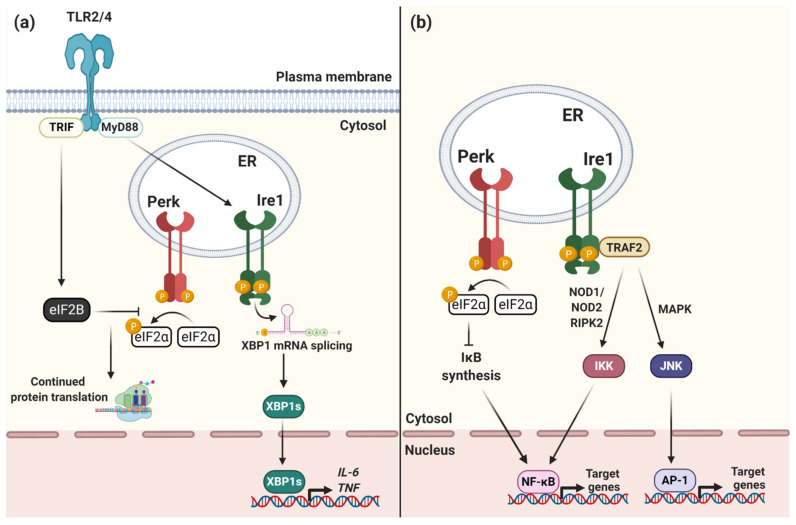Figure 2.
The UPR drives pro-inflammatory responses to ER stress. (a) TLR signaling activates Ire1 and XBP1 mRNA splicing via a MyD88-dependent pathway. Translocation of XBP1s into the nucleus enhances the transcription of pro-inflammatory cytokines including IL-6 and TNFα. TLR signaling via TRIF activates eIF2B GEF activity to counteract the activity of phosphorylated eIF2α. This allows protein synthesis, and therefore cytokine production, to proceed despite Perk activation and delays pro-apoptotic signaling via CHOP. (b) Ire1 interacts with TRAF2 to activate IKK and JNK signaling cascades. IKK and JNK activate the pro-inflammatory transcription factors NF-κB and AP-1, respectively, to drive the production of pro-inflammatory cytokines during ER stress. Perk signaling and eIF2α phosphorylation inhibits biosynthesis of inhibitor of κB (IκB) which increases NF-κB transcriptional activity and pro-inflammatory cytokine production.

